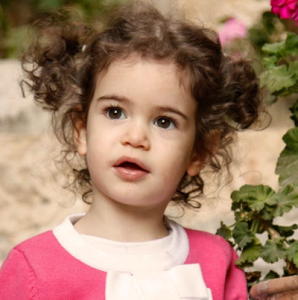Up to five percent of the population has strabismus.
Strabismus occurs when the two eyes are unable to maintain proper alignment and focus together on an object— one eye looks directly at the object, while the other eye points in a different direction.
Strabismus is often referred to as, ‘crossed eyed’, ‘wall eyed’, an ‘eye turn’, or a ‘squint’. The eye turn could be inward (esotropia, or ‘cross-eyed’), outward (exotropia or ‘wall-eyed’), upward (hypertropia) or downward (hypotropia). The condition can be a constant or intermittent problem, and may consistently affect the same eye (unilateral) or affect a different eye each time (alternating).
Strabismus does not go away on its own— but it is usually treatable. With proper diagnosis and treatment, children can continue on a path of healthy development and clear vision.
What causes strabismus?
Strabismus often develops in infants and young children, though it can develop in adults as well.
The condition can be caused by:
- Poor development of eye coordination (binocular vision)
- Severe farsightedness (hyperopia)
- Lazy eye (amblyopia)
- Significant difference of optical prescription between the two eyes
- An ocular muscle weakness (eye movement problems)
- Head trauma or stroke
- Brain tumors or other systemic health issues
What are the signs and symptoms of strabismus?
Strabismus may initially cause double vision that can be quite uncomfortable. To prevent double vision, the brain begins to actively ignore visual input from the affected eye, often resulting in amblyopia (lazy eye) or an eye turn, where the eyes are no longer aligned.
The most common sign of strabismus is a noticeable misalignment of the eyes, where one eye is turned up, down, in, or out, when compared to the other.
Other symptoms can include:
- Headaches
- Eye strain
- Double vision
- Reading difficulty or fatigue
If you experience any of these symptoms, contact an eye doctor near you to see if you or your child have strabismus.
SEE RELATED: Strabismus Surgery
How is strabismus diagnosed?
Many times, newborns present with intermittent crossed eyes due to immature visual development, but this typically disappears as the visual system matures. True strabismus, however, appears as a child matures and begins to use his two eyes simultaneously, such as for walking and picking up objects.
Most times, strabismus is only noticed when the child is 12 to 24 months old.
That being said, strabismus can develop at any age.
Through a comprehensive eye exam, your doctor can detect signs of the eye turn. The earlier the condition is diagnosed and treated, the more successful the outcome.
If your child has an eye turn, schedule an eye exam with an eye doctor near you to get a comprehensive diagnosis and treatment plan.
How is strabismus treated?
The treatment method often depends on the cause of the strabismus. The most common methods include:
- Eyeglasses
- Vision therapy
- Eye muscle surgery
Vision therapy for strabismus
Vision therapy is highly effective for the treatment of strabismus and includes programs to improve:
- Eye alignment
- Eye teaming
- Eye focusing
- Eye movements
- Binocular vision
- Visual processing
Therapeutic lenses, prisms, and filters may be used as part of a vision therapy program. Vision therapy not only involves ocular muscle training, it also includes training and development of the eye-brain connections (neuroplasticity) required for clear and comfortable vision— which results in a lasting cure.
Sometimes, a program of vision therapy may be recommended post-strabismus surgery to re-train the visual system.
It is important to treat strabismus as early as possible as the eye turn may be the result of a serious health issue.
LEARN MORE: Guide to Eye Turns
If you suspect that your child may have an eye turn, do not hesitate to schedule an appointment with an eye doctor for a comprehensive eye exam.
Early detection and treatment of eye turns will enable your child to reach important developmental milestones and set them on the path for clear vision.










